May 2008
Monthly Archive
May 31, 2008
Posted by the Monkey under
Books and movies
[2] Comments
 I’m a big fan of the Indiana Jones movies (I have the first three on DVD), and I was waiting for the new one, Indiana Jones and the Kingdom of the Crystal Skull. While waiting, I received a copy of a new book that came out alongside the film, The Indiana Jones Handbook by Denise Kiernan and Joseph D’Agnese, from Quirk Books (distributed by Chronicle Books), and I wanted to recommend it for YA collections. (ISBN: 978-1594742217)
I’m a big fan of the Indiana Jones movies (I have the first three on DVD), and I was waiting for the new one, Indiana Jones and the Kingdom of the Crystal Skull. While waiting, I received a copy of a new book that came out alongside the film, The Indiana Jones Handbook by Denise Kiernan and Joseph D’Agnese, from Quirk Books (distributed by Chronicle Books), and I wanted to recommend it for YA collections. (ISBN: 978-1594742217)
The Indiana Jones Handbook is, basically, a manual of how to be like Indiana Jones, the adventurous archaeologist. Want to learn how to deal with a tarantula bite? (Remember the tarantulas at the beginning of Raiders of the Lost Ark?) Care to know how to avoid being poisoned? (Recall when Dr. Jones gets poisoned at the beginning of Temple of Doom and has to get that antidote?) Want to know the best way to get across a rope bridge? This guide tells you, with its tongue edging into its teeth, how to deal with these situations and lots more.
The Handbook also has several color photos from the first three films (but none from the new one, unfortunately), which I’ll bet that plenty of your fifth-through-twelfth-graders have seen on a small screen. There are lots of step-by-step diagrams, too. And I have a feeling that the teens and preteens you serve will get a big kick from reading about how to deal with motorcycle sidecars, or with quicksand (which plays a critical role in a scene in the new film).
Did you see the new film, by the way? I really enjoyed it. It’s not quite as good as the first and third Indy films, but it was still lots of fun. And when it comes out on DVD, I’ll get a copy, too.
May 29, 2008
 Yahoo News reported that a group of “electro-sensitive” folks in Santa Fe, NM, is protesting wi-fi in libraries and other public buildings, and wants it removed because it’s harmful to their health.
Yahoo News reported that a group of “electro-sensitive” folks in Santa Fe, NM, is protesting wi-fi in libraries and other public buildings, and wants it removed because it’s harmful to their health.
I guess that it is kind of spooky to think of all those rays passing through your body, everywhere you go, 24/7. But there’s no getting away from it, is there? I mean, TV and radio waves are passing through you all the time, too. And what about all the electricity leaking out of all those sockets? Especially when it leaks out of those big grounded sockets with three holes? It sort of makes you wonder.
I don’t think it would be too helpful in most libraries, though, to remove wireless services. When I worked at a branch with wi-fi in New York City, I saw people come down on Sunday mornings, when the library was closed, to sit on the front steps in the snow in the middle of winter to borrow the use of the library’s router. They wouldn’t be happy if the city banned wi-fi, and I wouldn’t, either.
May 28, 2008
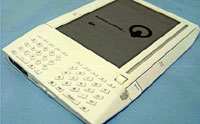 Yahoo News reported today that Amazon is dropping the price of its Kindle e-book reader device by $40, to $359. Woo-hoo, I say. Not.
Yahoo News reported today that Amazon is dropping the price of its Kindle e-book reader device by $40, to $359. Woo-hoo, I say. Not.
Until the price of a good reliable e-book reader reaches $100 or less – and I’m not holding my breath – I doubt that e-book readers will become must-haves for more than a very few people – and they certainly won’t be of much interest to young people. Why buy e-books that you can’t move among devices, and can’t sell used, when you can buy real 3D books? Last weekend I spent half my Saturday helping out with Austin Public Library’s Monster Book Sale, and saw all kinds of wonderful books – yeah, well, all kinds of discarded library books, plenty of which were pretty wonderful – for $2 to 50 cents apiece.
I bought a classic discarded hardcover library copy of Ursula K. Le Guin’s marvelous A Wizard of Earthsea, with its 1968 copyright date and its plastic-covered dust jacket all raggedy around the edges, for $1. At that price, I can carry it around easily and not care (too much) whether it gets any more beat-up that it already is, or whether it gets something spilled on it.
Try buying that book as an an e-book at that kind of price. Have you seen the wonderful article, “The Elusive E-Book,” by Stephen Sottong in the May American Libraries? I wish I could link to it, but ALA doesn’t allow access to non-members. If you can get hold of a copy, please read it. Sottong expresses exactly my feelings about the current unworkability of electronic books. He says:
The reason [the Sony Reader and Amazon Kindle} will fail is the same one that doomed the Rocket e-book: Why would anyone pay $300 to $400 for a dedicated reader device when the display and interface are not as good as a paper book? As author Walt Crawford concisely put it, “Paper books work.”
Costs must come down, and flexibility must improve for e-books to succeed. We need to have e-books we can read on our cell phones and laptops without transfer hassles. And even then, I don’t feel that we’ll see e-books ever triumph – because, like Crawford, I think the 3D book works really well.
May 26, 2008
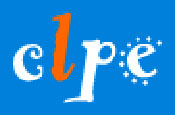 A recently released study from the UK Centre for Literacy and Primary Education (CLPE – is this group a rough equivalent of the American IRA?) reveals that many teachers aren’t using children’s books well with their classes. The CLPE has been running a study called “The Power of Reading” since 2005, with the goal of “enhanc[ing] teachers’ and children’s pleasure in reading and rais[ing] children’s achievement through developing teachers’ knowledge of literature and its use in the primary classroom.”
A recently released study from the UK Centre for Literacy and Primary Education (CLPE – is this group a rough equivalent of the American IRA?) reveals that many teachers aren’t using children’s books well with their classes. The CLPE has been running a study called “The Power of Reading” since 2005, with the goal of “enhanc[ing] teachers’ and children’s pleasure in reading and rais[ing] children’s achievement through developing teachers’ knowledge of literature and its use in the primary classroom.”
The study of the first two years of the project tells us that plenty of teachers don’t know children’s literature well, and aren’t using it knowledgeably with their classes. I have a fairly strong feeling – based on what I’ve heard over the years from public children’s librarians across the US – that things aren’t that much different in this country. We can only guess about this, of course, because I haven’t heard of a recent similar study in the US. Elementary teachers here aren’t required to take coursework in children’s literature, and often don’t keep track of what’s new and interesting in children’s books.
And many states, filled with school districts that are sweating to pay for their classroom teachers under No Child Left Behind, don’t require elementary schools to hire certified media specialists. That means, of course, that plenty of teachers don’t have someone to advise them about what’s new and cool in children’s books – except for the local public children’s librarian.
And it’s hard to make contact with local classroom teachers – unless we pick up that phone and call the schools around us.
May 23, 2008
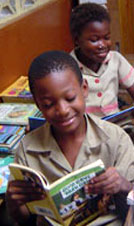 Now that we’ve reached Memorial Day weekend and we’re on the cusp of summer, it’s – of course – time to be promoting summer reading programs in our libraries. One site that has some good material targeted at parents all year long is Reading Rockets, a site from WETA public television. They have a pretty good summer reading site, “Get Ready for Summer!” that’s more school- and teacher-oriented than public-library oriented, but it’s good to pass along to any parents and teachers who are looking for worthwhile material on reading.
Now that we’ve reached Memorial Day weekend and we’re on the cusp of summer, it’s – of course – time to be promoting summer reading programs in our libraries. One site that has some good material targeted at parents all year long is Reading Rockets, a site from WETA public television. They have a pretty good summer reading site, “Get Ready for Summer!” that’s more school- and teacher-oriented than public-library oriented, but it’s good to pass along to any parents and teachers who are looking for worthwhile material on reading.
While you’re at the Reading Rockets site, you should also scoot over to some of the good informational pages elsewhere on the site. I particularly recommend the “Strategies to Help Kids Who Struggle With Reading” page, which will point you to some brief but pithy articles that should interest parents with kids who are having reading problems. They can help parents – in particular parents who come from lower-income families – figure out how they can help, and get help for, their kids.
The important point we should all remember is here, and it’s kind of scary. But it’s true:
Unfortunately, the older a child is, the more difficult it is to teach him or her to read. The window of opportunity closes early for most kids. If a child can’t read well by the end of third grade, odds are that he or she will never catch up. And the effects of falling behind and feeling like a failure can be devastating.
I’ve seen so many boys, I mean kids, turn off to reading after third grade, because they didn’t get help soon enough. So we should be encouraging parents not to wait and not to delay. And we should be encouraging those parents to read, read, read aloud to their kids with reading problems.
May 19, 2008
Posted by the Monkey under
Kids & music
Leave a Comment
 Whoa! It’s been a long while since I’ve posted a ukulele song, so today I’m posting a song that seems to have become politically incorrect over the past decade or so: “There was an Old Lady Who Swallowed a Fly”. Have you noticed that there have been several picture book versions of this song that have come out in which the old lady doesn’t die?
Whoa! It’s been a long while since I’ve posted a ukulele song, so today I’m posting a song that seems to have become politically incorrect over the past decade or so: “There was an Old Lady Who Swallowed a Fly”. Have you noticed that there have been several picture book versions of this song that have come out in which the old lady doesn’t die?
In fact, nobody ever dies in recent picture book versions of this song. That doesn’t work for me.
And is it both ageist and sexist? I dunno. I never thought of it that way, but maybe I’m wrong.
I guess it’s probably not a good idea to have anyone die in a picture book, unless it’s a politically correct book like The Fall of Freddie the Leaf (remember that?) or Badger’s Parting Gifts, that explains death to young kids. But I’ve always thought of this song as a goofy song. If you tried swallowing a whole horse (and of course the old lady is not going to cut that horse up into steaks and chops before she swallows it, is she?), you would explode, with a big KA-BOOM. And death by explosion is something even little kids get, I’ve always found.
But I’ve never performed this song for purely toddler or preschool groups, anyway. I’ve always done it for audiences that are at least halfway younger elementary kids – they’re the ones who seem to get it best.
So here I’m including the way I’ve always performed it – very simple strumming and frequent interruptions to shrug, shake my head, and make comments. When you perform it, remember that the song is in 3/4 time, like a waltz, and that it should be sung in as silly a way as you can manage, even when you’re being melodramatically tragic – which I always am when I get to the final verses. I sniff loudly and shake my head as you might imagine a Victorian undertaker would do it.
Have fun with it.
May 12, 2008

Here are two stories worth looking at that I found over the weekend. The first one is a New York Times story about midsize portable PCs, “Do You Have That Portable in a Midsize?” Intel is calling them “Mobile Internet Devices” or (cleverly) M.I.D.s, because they’re about halfway in size between a laptop PC and a cell phone.
These are the kinds of PCs I predict all kids and teens (and most of us, really) will be carrying around within five to seven years. (Why so long? Read on.) They’re natural extensions of the cell phone, and they’ll bring us everything that we must sit down at a PC – whether desktop or laptop – to access now.
So far there have been a few attempts to create M.I.D.-like PCs, but the technology is only now reaching the point at which they’re becoming almost practical.
I say “almost” because if you read this piece, you’ll learn that the folks at Intel have not yet created a chip small and efficient enough to be able to run a real PC operating system – such as Microsoft Windows XP – on a small device. If you want a peek, however, into what I feel will be the future, take a look at this article. In ten years or less, a library “PC lab” will look about as up-to-date as a table covered with dial telephones.
But the role of libraries will still be critical to provide access to those who can’t afford Web access. But what will Web access look like in 2018? That’s what interests me. It may be, as NY Times writer John Markoff suggests, very possible to use all the cool Web stuff you can imagine on a cell phone-sized screen. Maybe the M.I.D. won’t be necessary at all:
I’ve been struck recently to see that when Web sites like Amazon, Facebook and Twitter are redesigned for the iPhone, the user experience is actually better than on a full Web screen. It turns out that a high-resolution, palm-size, three-and-a-half-inch screen is just fine for seeing what your friends are up to, and for reading your e-mail and even your newspaper.
The other tech piece I found that interested me comes from the BBC News site: “Power-hungry IT firms change focus.” Most of us like to think that information technology, which we in libraries have become more and more dependent on, is at least fairly sound ecologically. Well, this story tells us, think again. Information technology – in particularly the huge data centers and server farms that keep the Internet running – use incredible amounts of energy.
Hewlett-Packard, for example used to have 85 data centers around the world consuming huge quantities of electricity for its servers and for air conditioning. Soon it will have only six. The story tells us:
But if data centres gobble up huge amounts of energy, this is only a fraction of the amount the ICT sector is responsible for as a whole, warns Peter Madden, who heads Forum for the Future, a charity focused on sustainability issues.
“There is a huge trail of energy and raw materials used in the supply chain.”
UN data suggests that the manufacture of one computer uses 75 times its weight in raw materials and water.
“And of course, there is the energy used over the lifetime of a computer,” says Mr Madden.
Mr Madden is among those who say there needs to be a change in design so that hardware is easier to dismantle and re-use, in order to reduce the amount going to landfill, whether it is aluminium chips, plastic or copper cables.
So when you’re recycling paper or using recycled magazine covers in your crafts programs, that’s great. But also take a look over at your public and staff PCs and think about how much energy they’re using every day and, in many cases, all night long. And are you recycling your inkjet cartridges and laser-printer toner cartridges, too?
May 9, 2008
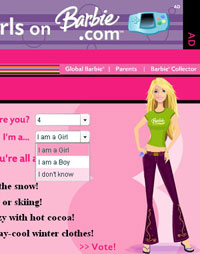 A New York Times article this week by kids’ software guru Warren Buckleitner, “When Web Time is Playtime,” will frighten you at least a little with a look into the growing number of big-time companies running children’s pay sites on the Web.
A New York Times article this week by kids’ software guru Warren Buckleitner, “When Web Time is Playtime,” will frighten you at least a little with a look into the growing number of big-time companies running children’s pay sites on the Web.
What’s scary about these sites is the way they lure kids into bugging their parents to pay for “deluxe” services after they’ve gotten hooked on the basic look and feel of the sites. Here’s a description of the retooled Barbie Girls site, one of the sites that was expressly designed from the beginning as a moneymaker:
Later this month, BarbieGirls will be retooled in this way. Last year the site required the purchase of a Barbie MP3 player for access to certain content, an idea that has been abandoned. In the new version, children will be able to get in free and chat with others, dress up their on-screen dolls and decorate a room. But a collection of some games and fashion items will be off limits unless they become a V.I.P. player, which requires cash. V.I.P.’s are distinguished from the other Barbies by their sparkling tiaras.
I hoped that not too many girls are lured astray by the site. Even if they’re not, though, the big successes of gaming sites like Worlds of Warcraft for adults is logically leading companies to supply kids’ game-and-fun sites on a by-the-month basis. Both boys and girls will beg Mom and Dad to join.
Will these sites affect how we see kids using the public PCs in libraries? I think there’s a pretty good chance they will, so if you spot any of the sites mentioned in this article on the kids’ screens, you’ll know that there may well be an “I’m better than you because my Mom paid for me to have a tiara” ethic going to work.
May 9, 2008
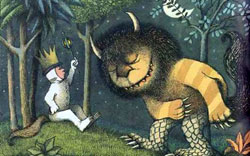
Here’s an interesting piece from the SFGate.com site – “Books that traumatized you as a child,” by Peter Hartlaub, who also wrote about movies that traumatized kids. Hartlaub doesn’t seem to have actually been traumatized by a book (in my experience, books don’t send most kids into terror and anxiety the way that visual and sound media – namely movies and TV shows – do).
But he does write that he doesn’t understand the appeal of Maurice Sendak’s Where the Wild Things Are.
I think part of the problem was it was introduced to me when I was really young, and had never seen anything more challenging in content than a Richard Scarry book. While I completely respect the artwork and Maurice Sendak’s story, the image of a little boy in his pajama-looking wolf suit wandering around without dinner in a spooky monster-filled woods was too depressing for me to enjoy.
It’s interesting, though, to see the books listed in the comments. Those who wrote in hated, or were frightened by, Bread and Jam for Frances, The Red Pony, and Where the Red Fern Grows. The last one, at least, is completely understandable, but I think that the books (and media) that bother or scare us as kids are often completely peculiar to our own experiences. Once, in a library where I worked years ago, there was a child who attended storytime weekly who was not only scared of insects of any kind, but he couldn’t bear to hear any story or song with bugs in it. If he heard “There was an old lady who swallowed a fly,” for example, his eyes grew wide, he’d start whimpering, and his mom had to scoop him up and take him out.
I hope he grew out of it.
Did I book ever traumatize me? I can’t really remember. I thought Where the Wild Things Are was an extremely cool story, myself. For me, it was scary TV shows. There are still a few episodes of Twilight Zone that I remember scared the bejezus out of me when I was eight or nine…
May 8, 2008
 Well, I may have been a little late finding this story, but here’s an important anniversary, particularly for those of us who were working with kids and reading in the 80s. I’m willing to bet that a good number of those who remember the Reagan Administration remember A Nation at Risk, a document that – gasp – asserted that our educational system was getting worse, not better. This document was pretty shocking news back then. Here’s a quote from the USA Today news story that noted the document’s 25th anniversary:
Well, I may have been a little late finding this story, but here’s an important anniversary, particularly for those of us who were working with kids and reading in the 80s. I’m willing to bet that a good number of those who remember the Reagan Administration remember A Nation at Risk, a document that – gasp – asserted that our educational system was getting worse, not better. This document was pretty shocking news back then. Here’s a quote from the USA Today news story that noted the document’s 25th anniversary:
On April 26, 1983, in a White House ceremony, Ronald Reagan took possession of “A Nation at Risk.” The product of nearly two years’ work by a blue-ribbon commission, it found poor academic performance at nearly every level and warned that the education system was “being eroded by a rising tide of mediocrity.”
If you’ve been around as long as I have, you probably recall how there were stories on the nightly news, in the papers, and in every magazine with reporters clucking and shaking their heads over the threat of so many of America’s children growing up so marginally literate.
It also fed the appetites of all the right-wing politicians and writers who have always hated paying taxes for public education and who used the report to demonstrate that our public schools, with their liberal, unionized teachers, were doing a lousy job of teaching America’s kids to read.
It was the first plank in the platform that eventually presented President Bush’s No Child Left Behind law, which to this day has been a thorn in the side of US education, and has justified many layoffs of plenty of school librarians.
Don’t get me wrong; I do feel that we could be doing a better job of teaching kids to read. But it seems to me that the No Child Left Behind way of doing things hasn’t been the right way, either.
Next Page »
 I’m a big fan of the Indiana Jones movies (I have the first three on DVD), and I was waiting for the new one, Indiana Jones and the Kingdom of the Crystal Skull. While waiting, I received a copy of a new book that came out alongside the film, The Indiana Jones Handbook by Denise Kiernan and Joseph D’Agnese, from Quirk Books (distributed by Chronicle Books), and I wanted to recommend it for YA collections. (ISBN: 978-1594742217)
I’m a big fan of the Indiana Jones movies (I have the first three on DVD), and I was waiting for the new one, Indiana Jones and the Kingdom of the Crystal Skull. While waiting, I received a copy of a new book that came out alongside the film, The Indiana Jones Handbook by Denise Kiernan and Joseph D’Agnese, from Quirk Books (distributed by Chronicle Books), and I wanted to recommend it for YA collections. (ISBN: 978-1594742217)







